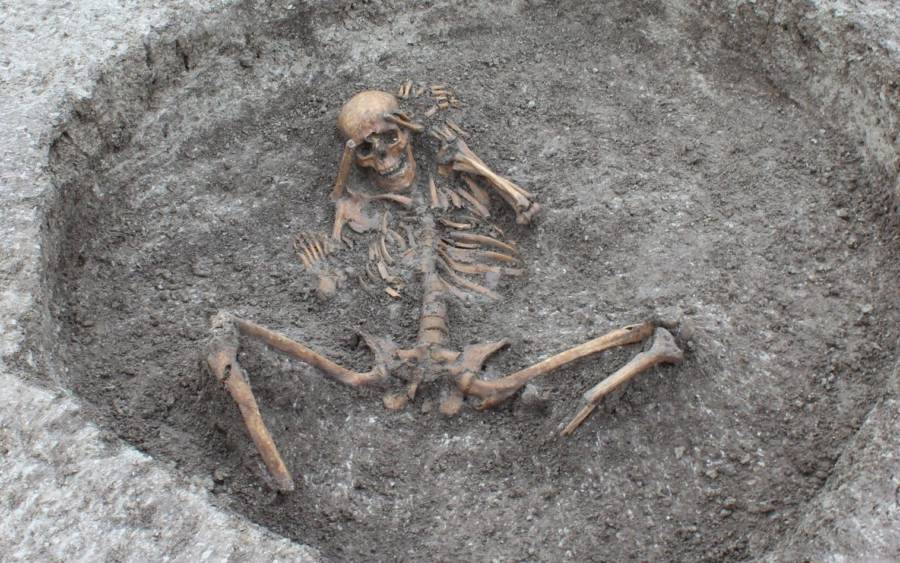Workers Laying Pipe In Britain Discover Grisly Remains Of Roman-Era Human Sacrifice Victims

When engineers were tasked with the routine laying of water pipes in Oxfordshire, England, they likely did not expect to find a nearly 3,000-year-old settlement, Iron Age and Roman-era tools — and dozens of Neolithic skeletons.
According to CNN, the remains of 26 people were found at the site, many of which were likely victims of ritualistic human sacrifice. One of the victims had their skull placed by their feet. Another, a woman, had her feet cut off and her arms tied behind her back.
Meanwhile, the tools unearthed ranged across a variety of historical periods but were certainly thousands of years old — before the Romans invaded Britain.
According to The Telegraph, evidence of animal carcasses and household items such as knives, pottery, and a comb, were also found.

As for the human remains, archaeologists are confident these unfortunate victims belonged to the same community that helped create the Uffington White Horse — a prehistoric sculpture made of chalk, found on a nearby hill.
“These findings open a unique window into the lives and deaths of communities we often know only for their monumental buildings, such as hillforts or the Uffington White Horse,” said Paolo Guarino, project officer at Cotswold Archaeology.
“The results from the analysis of the artifacts, animal bones, the human skeletons, and the soil samples will help us add some important information to the history of the communities that occupied these lands so many years ago.”
All of the unearthed evidence has since been removed and taken in by experts for forensic investigation. The engineers who stumbled upon this substantial find were conducting engineering work on behalf of a Thames Water project focused on protecting a local chalk stream.
Neil Holbrook, Cotswold Archaeology chief executive, said the discoveries “provided a glimpse into the beliefs and superstitions of people living in Oxfordshire before the Roman conquest.
Evidence elsewhere suggests that burials in pits might have involved human sacrifice.”
“The discovery challenges our perception about the past, and invites us to try to understand the beliefs of people who lived and died more than 2,000 years ago,” said Holbrook.

This news follows that of an incident in which two Danish workers found a medieval sword in a sewer.
But as for this latest find, it’s certainly added substantial insight to our previous understanding of the time period in question. Human sacrifice and ritualistic burial practices, for instance, can now arguably be considered as a standard custom of that region during that time.
Fortunately, the right people are hard at work at extracting as much functional information from the discovered artifacts and human remains as possible. Hopefully, there will be even more illuminating data to share in the near future.





